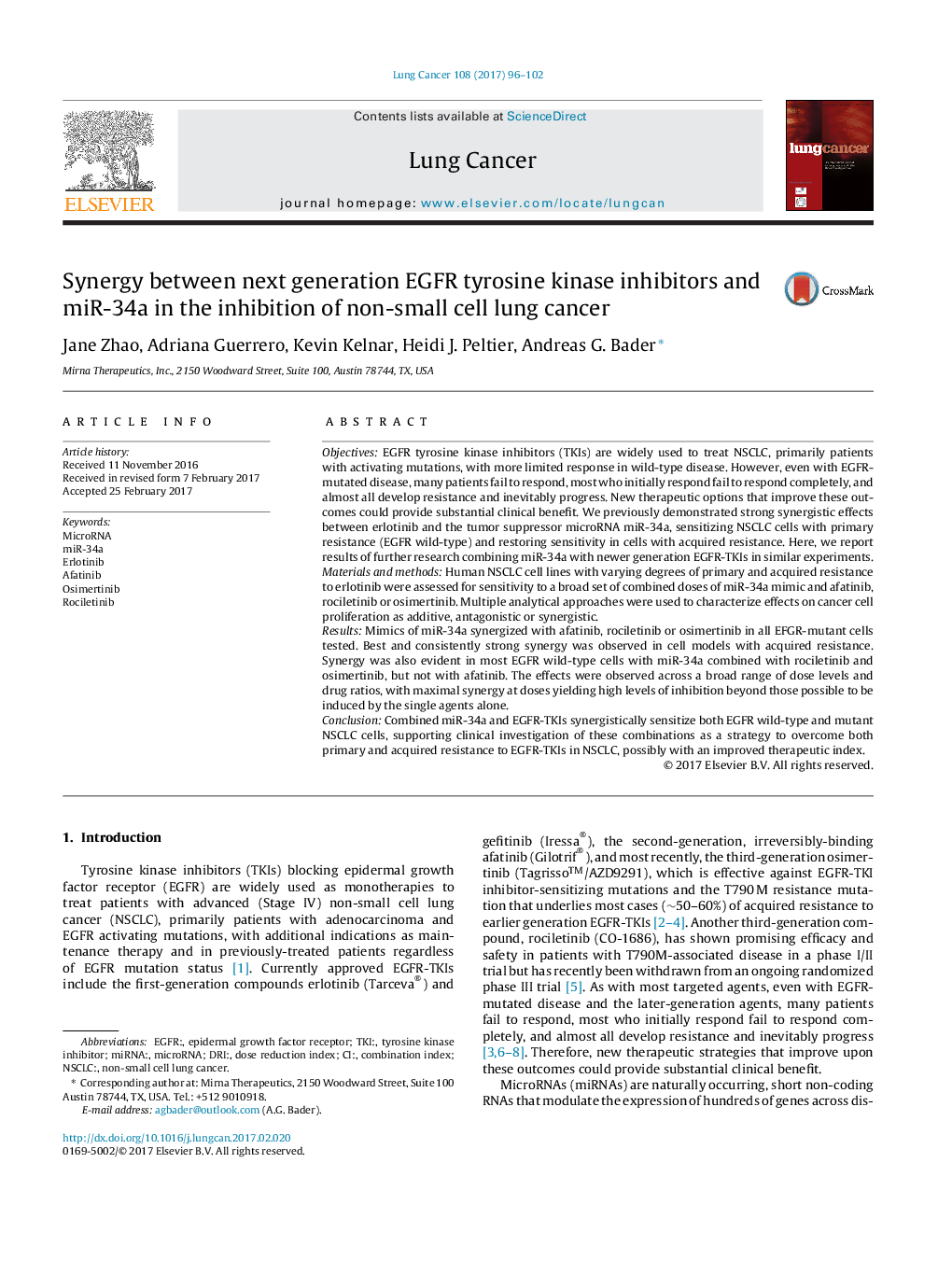| کد مقاله | کد نشریه | سال انتشار | مقاله انگلیسی | نسخه تمام متن |
|---|---|---|---|---|
| 5528183 | 1547959 | 2017 | 7 صفحه PDF | دانلود رایگان |

- miR-34a mimics synergize with next generation EGFR-TKIs.
- Best synergy was observed in cell models of acquired erlotinib resistance.
- Synergy occurred in both EGFR-mut T790 wild-type and T790Â M positive cells.
- Patients who progressed on erlotinib may be well suited for the combination.
ObjectivesEGFR tyrosine kinase inhibitors (TKIs) are widely used to treat NSCLC, primarily patients with activating mutations, with more limited response in wild-type disease. However, even with EGFR-mutated disease, many patients fail to respond, most who initially respond fail to respond completely, and almost all develop resistance and inevitably progress. New therapeutic options that improve these outcomes could provide substantial clinical benefit. We previously demonstrated strong synergistic effects between erlotinib and the tumor suppressor microRNA miR-34a, sensitizing NSCLC cells with primary resistance (EGFR wild-type) and restoring sensitivity in cells with acquired resistance. Here, we report results of further research combining miR-34a with newer generation EGFR-TKIs in similar experiments.Materials and methodsHuman NSCLC cell lines with varying degrees of primary and acquired resistance to erlotinib were assessed for sensitivity to a broad set of combined doses of miR-34a mimic and afatinib, rociletinib or osimertinib. Multiple analytical approaches were used to characterize effects on cancer cell proliferation as additive, antagonistic or synergistic.ResultsMimics of miR-34a synergized with afatinib, rociletinib or osimertinib in all EFGR-mutant cells tested. Best and consistently strong synergy was observed in cell models with acquired resistance. Synergy was also evident in most EGFR wild-type cells with miR-34a combined with rociletinib and osimertinib, but not with afatinib. The effects were observed across a broad range of dose levels and drug ratios, with maximal synergy at doses yielding high levels of inhibition beyond those possible to be induced by the single agents alone.ConclusionCombined miR-34a and EGFR-TKIs synergistically sensitize both EGFR wild-type and mutant NSCLC cells, supporting clinical investigation of these combinations as a strategy to overcome both primary and acquired resistance to EGFR-TKIs in NSCLC, possibly with an improved therapeutic index.
Journal: Lung Cancer - Volume 108, June 2017, Pages 96-102